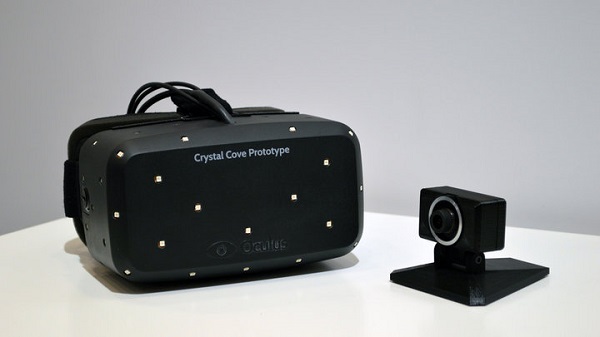The first version of Oculus Rift hasn’t even penetrated the market well, and the manufacturer already announced a successor to it, currently codenamed the Crstal Cove Prototype.
Oculus Rift 1.0 was already a revolutionary device, but it had some major downsides, like the small resolution that made the whole experience less immersive. The Crystal Cove Prototype is supposed to make the line between VR and actual reality a lot thinner. It includes a better screen and new software techniques that improve the experience, making it feel a lot more natural.

Palmer Luckey, the founder of Oculus VR, explained in an interview with Polygon how the new VR headset works: “What we’re doing is we’re taking the image and flashing it on when it’s correct, and only keeping that on for a fraction of a millisecond and then turning it off and then going black until the next pulse. Low persistence is really, really important. It’s probably the most important thing we’re showing. It doesn’t sound really exciting… but it’s incredible the difference low persistence makes. You really have to see it. It’s mind-blowing.”
According to Luckey, there isn’t any lag between the image rendered on the PC and the one see through the new Crystal Cove Prototype. The Oculus Rift 2.0 will undoubtedly be used mostly by gamers, but people will surely also find other uses for it, as they did with the first version of the VR headset.
While reading about the new Oculus Rift, I stumbled upon Eric Limer‘s post on Gizmodo, wittily titled “I Wore the New Oculus Rift and I Never Want to Look at Real Life Again.” I guess it really is mind-blowing, if it caused such a reaction!
I think that they should’ve released the first Oculus Rift to the masses, and not only to developers, before launching a new iteration. This way, they could have received a lot more feedback, and the second version would have had a lot more features that people consider to be useful. I’m not saying that the Crystal Cove Prototype isn’t great, but that it could have been even better if they allowed more people to give their input. I can’t wait to see what applications this VR headset will have, besides gaming.
If you liked this post, please check the Oculus Rift hack that enables POV on the Black Armor drone and the Vertigo Simulator that is the closest thing to virtual reality, yet.










